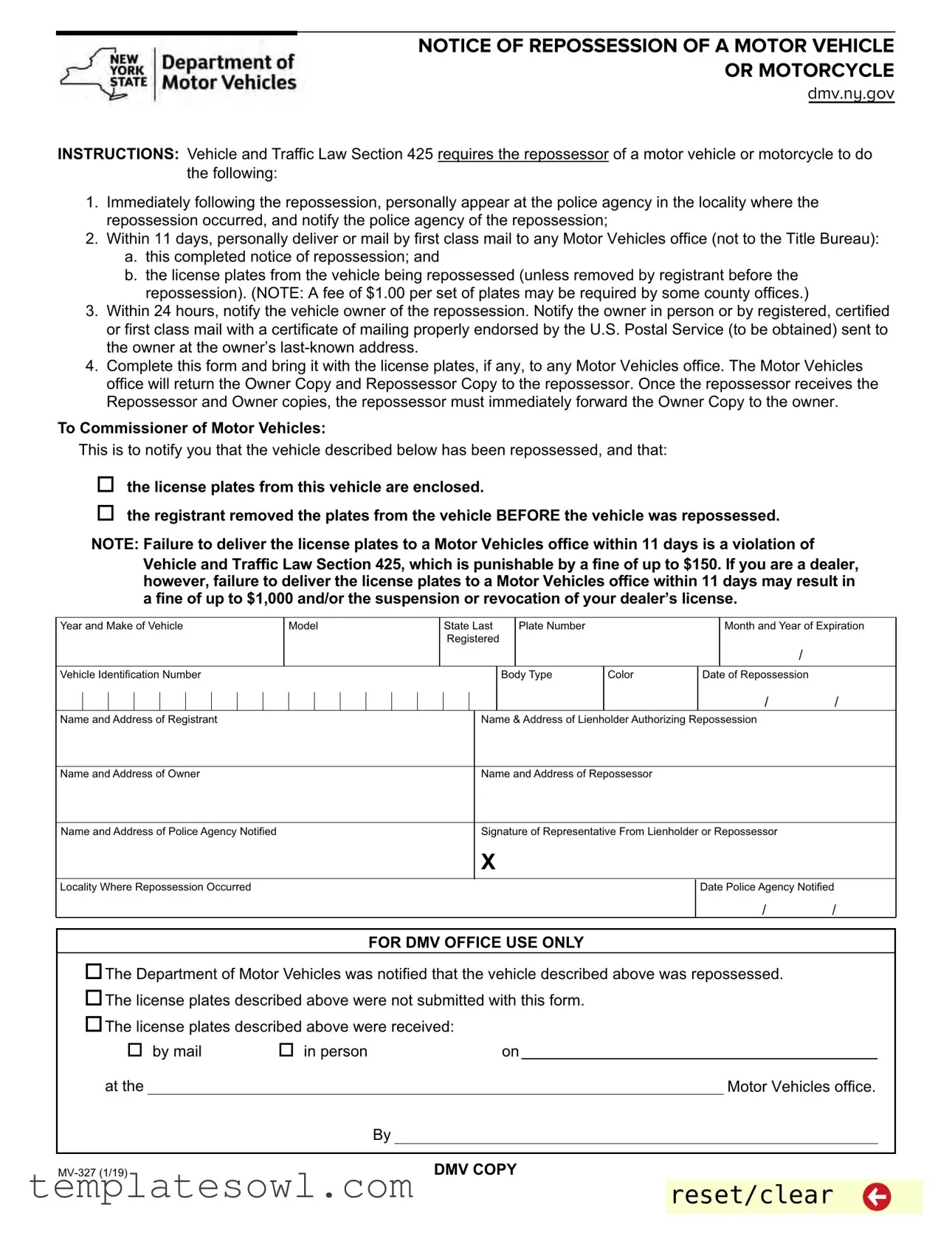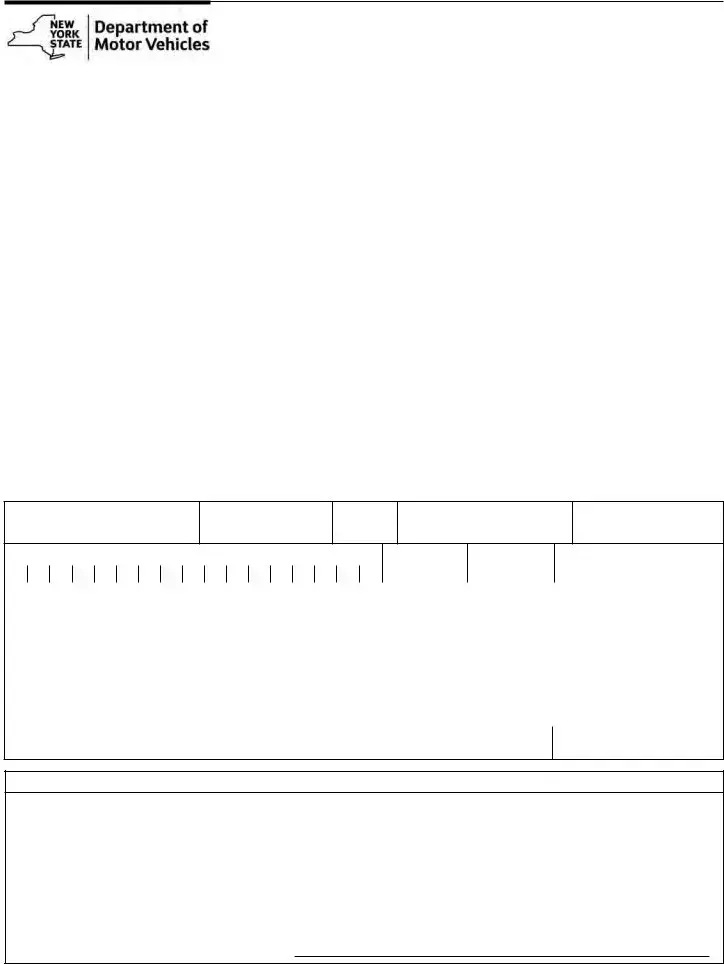What is the MV 327 form?
The MV 327 form, known as the Notice of Repossession of a Motor Vehicle or Motorcycle, is a document required by New York State's Vehicle and Traffic Law. This form must be filed by the repossessor after they have taken possession of a vehicle or motorcycle. It helps inform relevant parties about the repossession, including the police and the vehicle's owner.
What steps must be taken immediately after a repossession?
Following a repossession, the repossessor is required to notify the local police agency immediately. This notification ensures that law enforcement is aware of the situation and can document it accordingly. Within 24 hours, the repossessor must also inform the vehicle owner about the repossession, either in person or through certified or registered mail.
What needs to be submitted along with the MV 327 form?
Along with the completed MV 327 form, the repossessor must submit any license plates taken from the repossessed vehicle. If the registrant removed the plates before repossession, this should be indicated on the form. The submission should be made to any Motor Vehicles office, but not to the Title Bureau.
What is the deadline for submitting the MV 327 form?
The MV 327 form, along with the license plates, must be submitted within 11 days after the repossession. Failing to do so can result in fines of up to $150. For dealers, the penalties can be even more significant, reaching up to $1,000.
How should the notification to the vehicle owner be done?
The vehicle owner must be notified within 24 hours of the repossession. This notification can be done either in person or via mail that is either registered, certified, or first-class. It’s essential to obtain a certificate of mailing from the U.S. Postal Service to ensure proper documentation of the notice.
What happens after submitting the MV 327 form to the DMV?
After the MV 327 form is submitted to the Motor Vehicles office, the repossessor will receive two copies back: the Owner Copy and the Repossessor Copy. The repossessor is responsible for immediately forwarding the Owner Copy to the vehicle owner.
What information needs to be included on the MV 327 form?
Key information required on the MV 327 form includes details about the vehicle such as year, make, model, body type, color, Vehicle Identification Number (VIN), and the last registered plate number. Additionally, the names and addresses of the registrant, lienholder, vehicle owner, and repossessor must be provided. It is also essential to indicate the date and locality of the repossession.
What are the consequences of failing to comply with MV 327 requirements?
Noncompliance with the MV 327 requirements can result in significant fines. Failure to deliver the license plates to a Motor Vehicles office within the specified timeframe can lead to a fine of up to $150 for individuals and up to $1,000 for dealers. There can also be additional consequences, including suspension or revocation of a dealer's license.
Who should be notified regarding the repossession?
The repossessor must notify both the local police agency and the vehicle owner about the repossession. Initial notification should happen immediately for the police and within 24 hours for the vehicle owner. Legal compliance regarding these notifications is crucial to avoid penalties.



